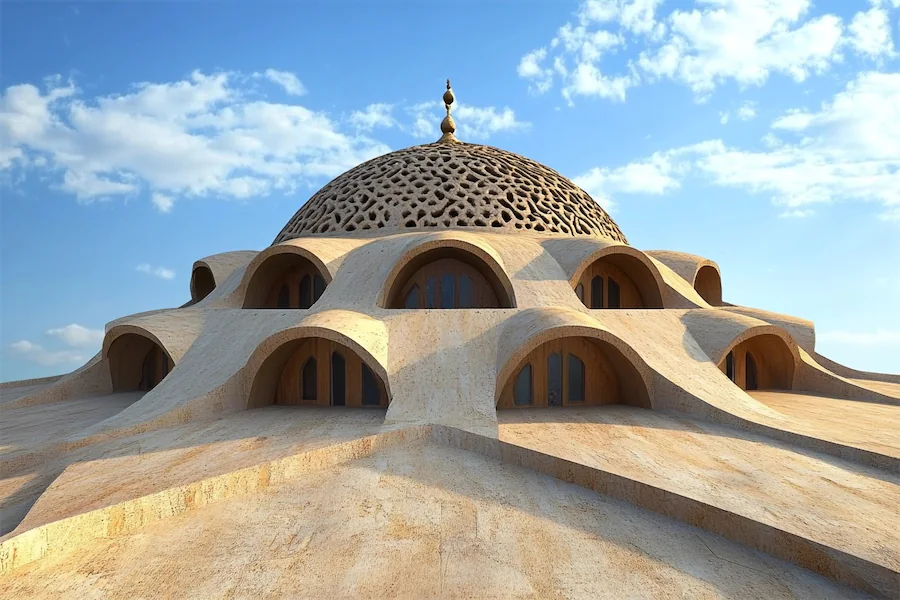Islamic domes are prominent architectural features that symbolize the vault of heaven and the unity of God. Their development reflects a blend of cultural influences and technological advancements.
History and Origins of Islamic Domes
The adoption of domes in Islamic architecture was influenced by pre-existing Byzantine and Persian structures. Early Muslims incorporated and adapted these forms, leading to unique designs such as the Dome of the Rock in Jerusalem, constructed between 688 and 691 AD.
This structure exemplifies a fusion of different architectural influences, with elements from the Byzantine era and early Islamic architectural styles.
Key Features of Islamic Domes
Islamic domes exhibit several distinctive characteristics:
- Structural Design: Domes are typically hemispherical and can be supported by a rotunda, drum, or pendentives. They often feature an oculus at the apex to permit natural light inside.
- Decorative Elements: The surfaces of domes are frequently adorned with intricate tile work, stucco, or carvings, reflecting the cultural richness of their time. For instance, the Alhambra in Spain showcases domes with elaborate stucco work and tile mosaics.
- Symbolism: The dome represents the vault of heaven, and its circular shape is believed to signify the unity of God and the perfection of His creation. It also creates an impression of spaciousness and grandeur, emphasizing the importance of the structure beneath it.
Applications of Islamic Domes
Domes are integral to various Islamic structures:
- Mosques: Serving as central architectural elements, domes enhance acoustics and signify the importance of the prayer hall. The Blue Mosque in Istanbul, for example, features a large central dome flanked by smaller domes, creating a cascading effect.
- Mausoleums and Shrines: Domes often cover tombs of significant figures, symbolizing the heavens and the afterlife. The Samanid Mausoleum in Bukhara, dating from the 10th century, is an early example of a domed Islamic tomb.
Considerations When Constructing Islamic Domes
When designing or restoring an Islamic dome, several factors should be considered:
- Structural Integrity: Ensuring the dome’s stability requires precise engineering, especially when integrating it with existing structures.
- Material Selection: Choosing appropriate materials, such as brick, stone, or modern composites, affects both the durability and aesthetic of the dome.
- Cultural Context: Incorporating traditional design elements that reflect the intended symbolic meanings and historical context of the building is essential.
Conclusion
Islamic domes are more than architectural features; they embody cultural values, spirituality, and artistic expression. Their designs continue to inspire and captivate, representing a timeless connection between architecture and the divine.
